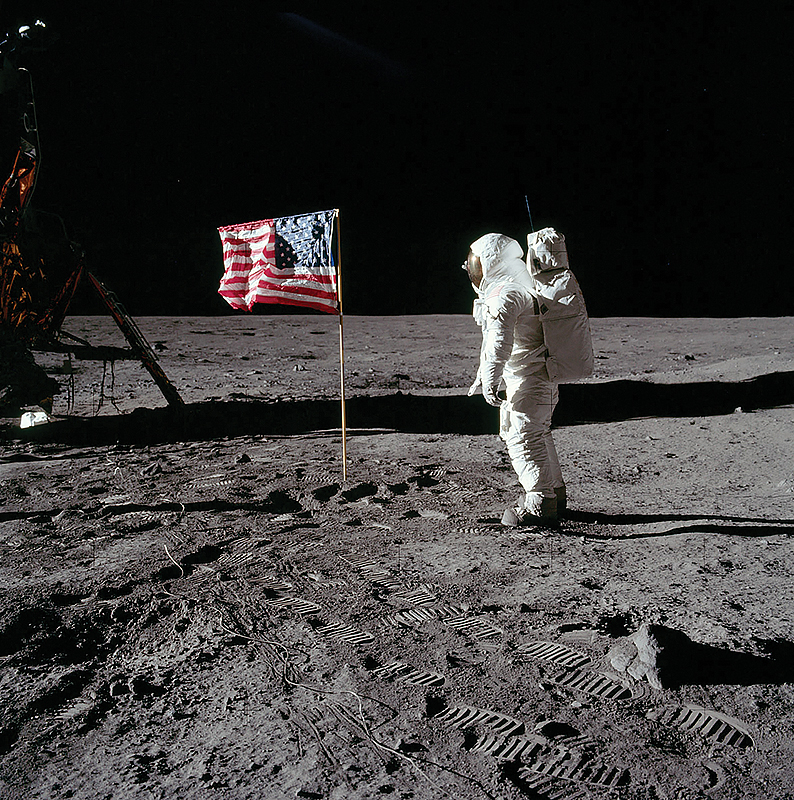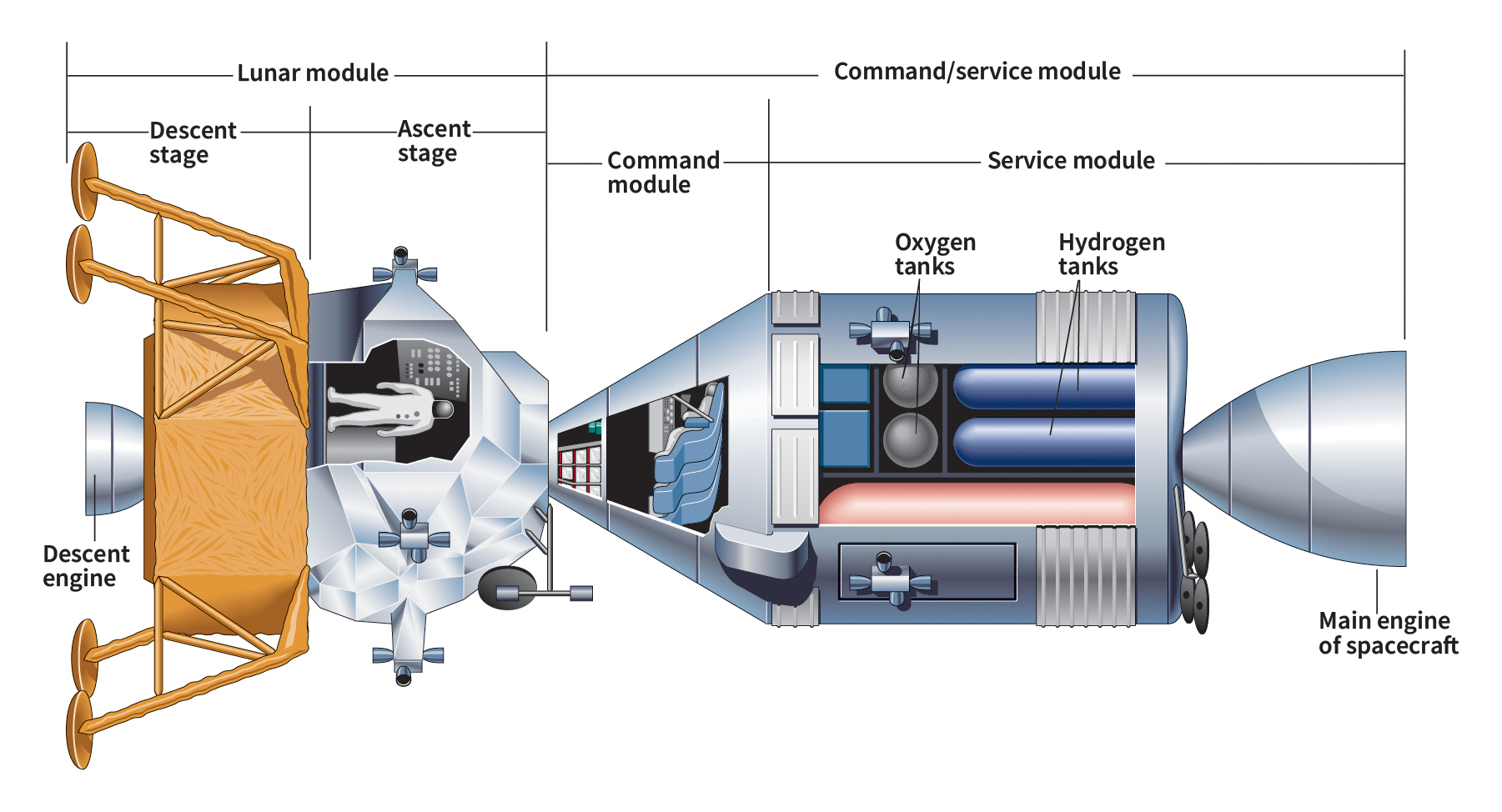Apollo 11 was the space mission that landed the first people to set foot on the moon. It was conducted by the United States National Aeronautics and Space Administration (NASA). The astronauts Neil A. Armstrong and Buzz Aldrin explored the lunar surface for more than two hours while Michael Collins stayed aboard the mission’s orbiting command module. The mission was the third of nine lunar missions in NASA’s Apollo program.

Apollo 11 launched July 16, 1969, from Cape Canaveral, Florida, on a Saturn V rocket, at the time the most powerful rocket ever built. The Apollo 11 spacecraft consisted of three modules: (1) the command module, (2) the service module, and (3) the lunar module. After three days in transit, the mission entered into orbit around the moon. On July 20, Armstrong and Aldrin touched down on the surface in the lunar module, named Eagle. They landed in a broad, flat area known as the Sea of Tranquility.

As the mission commander, Armstrong was the first person to leave the lunar module and set foot on the surface. Upon taking his first step onto the moon, he said, “That’s one small step for [a] man, one giant leap for mankind.” (The word “a” was lost in radio transmission.) Aldrin joined him on the surface about 20 minutes later.
Armstrong and Aldrin performed experiments, set up scientific equipment, and collected samples of the lunar surface, a fine dusty powder called regolith. After more than two hours, they returned to the lunar module and discarded items no longer needed for the mission onto the surface of the moon. Then, they blasted off in the lunar module and reunited with Collins at the command and service modules in orbit around the moon. From there, the three astronauts set a course for Earth, jettisoning (discarding) the lunar module and the service module along the way.
Loading the player...Space exploration: Apollo 11
The Apollo 11 command module splashed down in the Pacific Ocean on July 24 and was recovered by the U.S. Navy aircraft carrier USS Hornet. The three astronauts were immediately quarantined until August 10. At the time, experts were concerned about possible infection by extraterrestrial pathogens (disease-causing microorganisms) that might have existed on the moon. Research made possible by the Apollo missions later determined the moon to be lifeless.

The Apollo 11 moon landing was a spectacle witnessed by millions of people around the world via television broadcast. The success of Apollo 11 effectively ended the space race, a period of intense competition between the United States and the Soviet Union to achieve supremacy in space exploration. The Soviet Union had been secretly planning to send cosmonauts to the moon, but their rocket, the N-1, experienced several malfunctions during test launches.
See also Space exploration (Exploring Earth’s moon).
